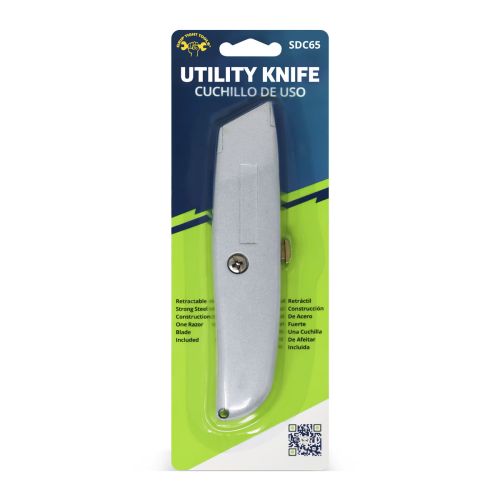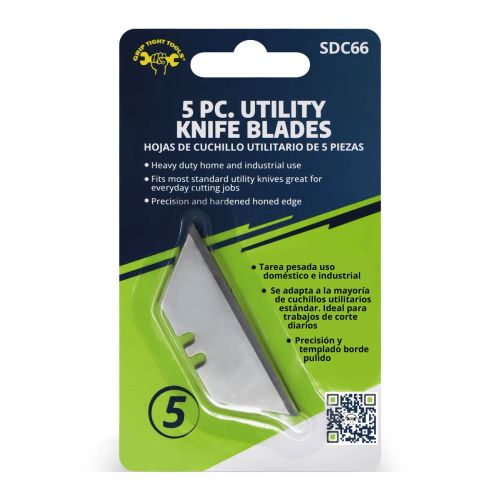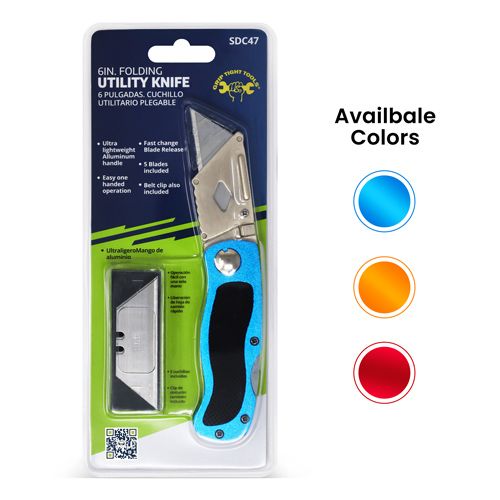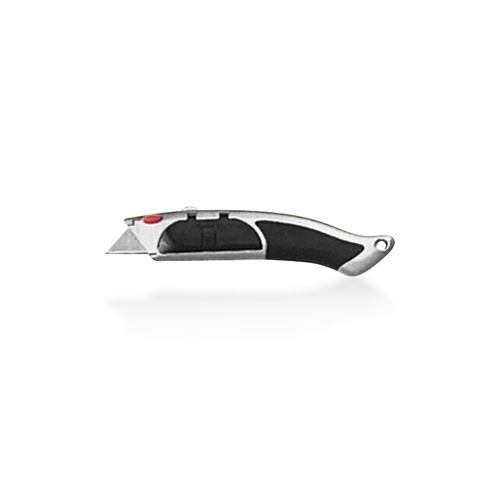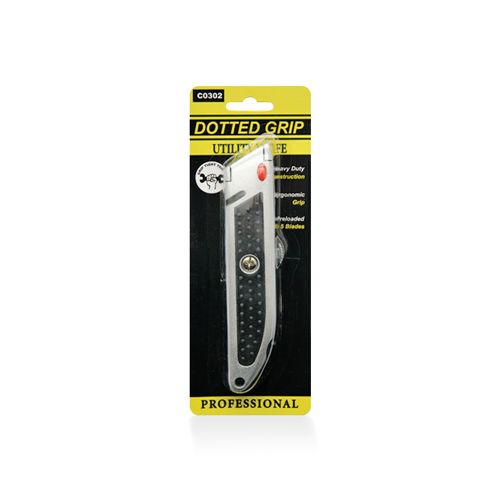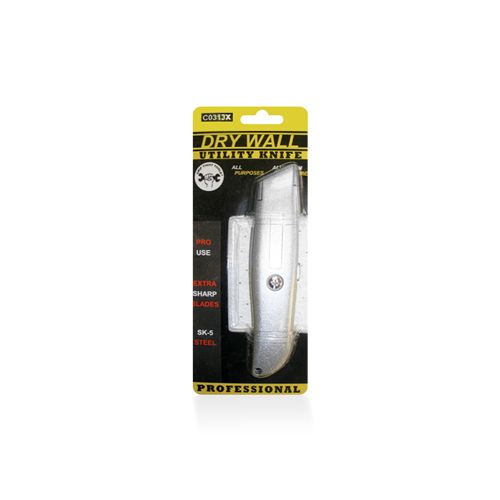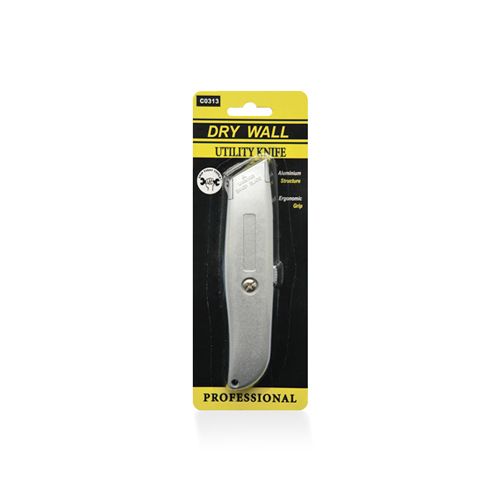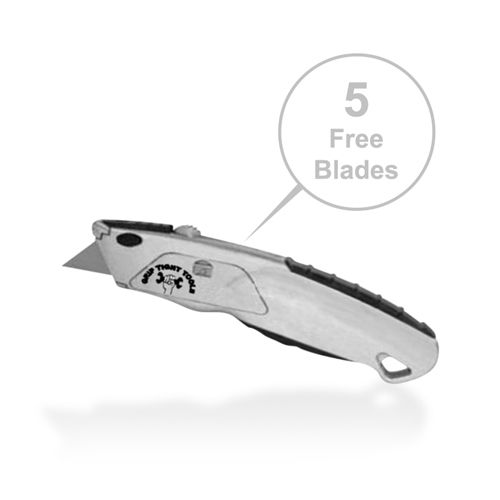FREE SHIPPING ON ORDERS $35+ (Excludes Bulky Items)
Utility Knives
UTILITY KNIVES FAQ's
What are Utility Knives?
Utility knives are any type of knife used for general manual work purposes. They are also known as box cutters, razor blades, or Stanley knives. They typically have a removable razor blade that can be replaced when it gets dull or damaged. Utility knives are commonly used for cutting cordage, scraping hides, butchering animals, cleaning fish scales, reshaping timber, and other tasks.
What are the types of Utility Knives?
- Fixed-blade utility knife: This is a type of utility knife that has a fixed blade that does not retract into the handle. It usually has a durable cutting edge that can handle rough work. It may come with a sheath or a holster for safe storage and carrying.
- Retractable-blade utility knife: This is a type of utility knife that has a blade that can be retracted into the handle when not in use. It usually has a sliding mechanism that allows the user to adjust the length of the blade exposure. It may also have a locking mechanism that prevents the blade from sliding out accidentally.
- Folding utility knife: This is a type of utility knife that has a blade that can be folded into the handle when not in use. It usually has a spring lock that secures the blade in the open or closed position. It may also have a clip or a lanyard hole for easy attachment to a belt or a keychain.
- Snap-off utility knife: This is a type of utility knife that has a blade that can be snapped off at predetermined segments when it gets dull or damaged. It usually has a plastic handle and a metal track that holds the blade. It may also have a built-in blade snapper that breaks off the used segments safely.
How to use Utility Knives?
- Wear safe clothing and eye protection. Avoid baggy clothing or dangling jewelry that could catch in the knife as you lean over it. Wear safety goggles or glasses that cover the sides of your eyes, to protect them from flying debris.
- Choose the correct utility knife and blade. Depending on your task, you may need a fixed-blade, retractable-blade, folding, or snap-off utility knife. You may also need a different blade material or shape, such as a standard, heavy-duty, hook, or round-point blade. Make sure the blade is sharp and securely fastened to the handle.
- Cut with steady pressure and motion. Hold the knife firmly with your dominant hand, and place your other hand away from the cutting path. Position the blade at a 45-degree angle to the surface that you want to cut. Slowly pull or push the knife along the cutting line, applying even pressure. Do not twist or jerk the knife, as this may cause it to slip or break.
- Change or retract the blade when not in use. If the blade gets dull or damaged, change it to a new one. If your knife has a retractable blade, slide it back into the handle when not in use. If your knife has a snap-off blade, use a built-in snapper or pliers to break off the used segment safely.
- Store the knife properly. Keep the knife in a sheath, holster, or case when not in use. Store it away from children and pets. Dispose of used blades carefully in a puncture-proof container.

